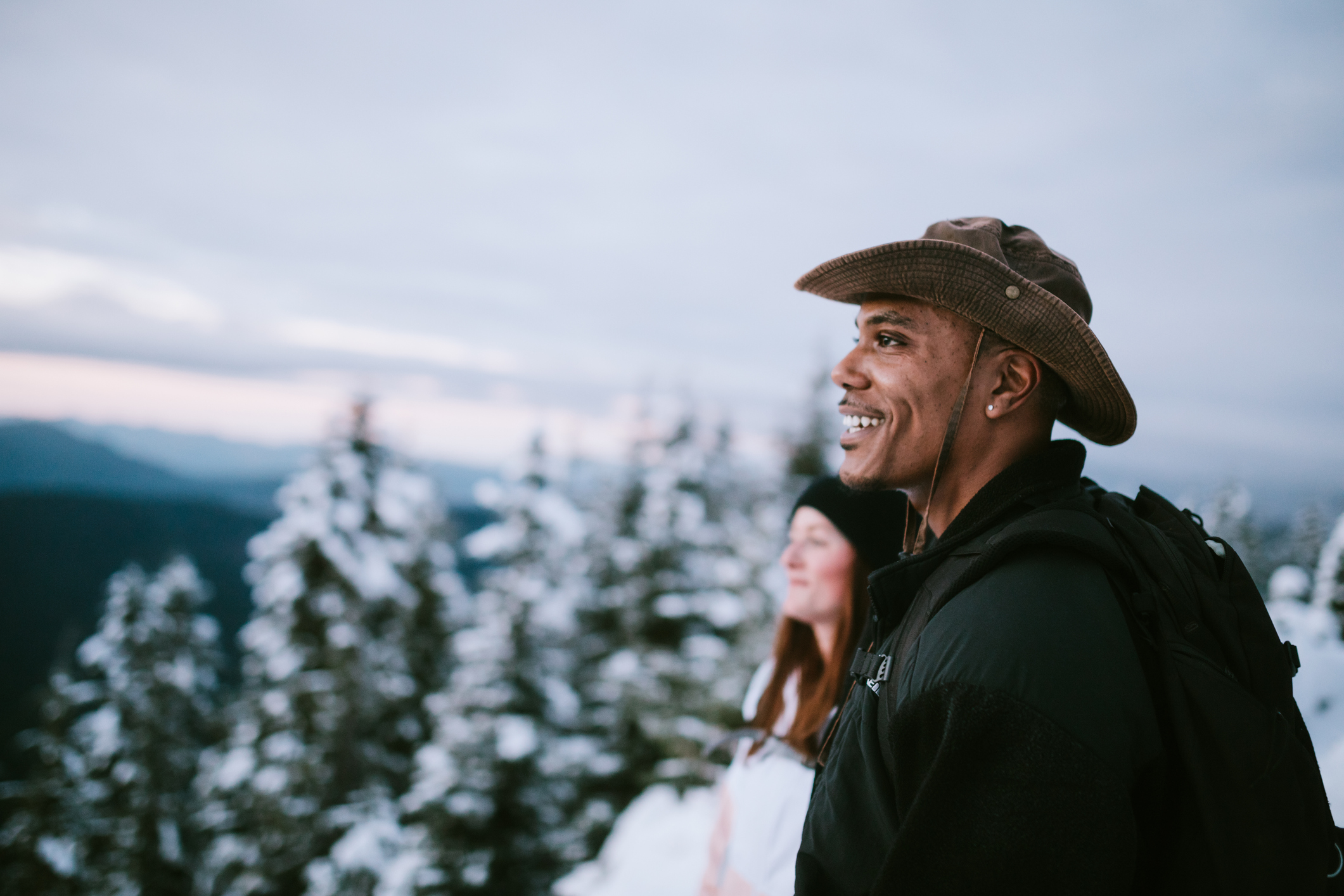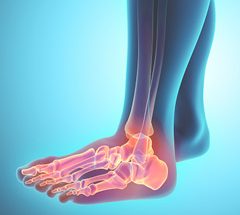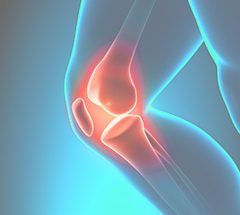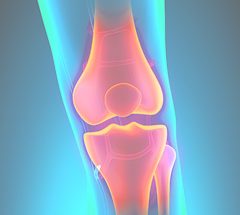
Here at ProOrtho, we know the happiest people during the slightly-less-than-fair-weather winter months of Western Washington tend to be those who:
(a.) fly to warmer climates sometime before June, and/or
(b.) thoroughly enjoy winter snow sports.
Sadly, we’re not here today to talk about tropically flavored poolside cocktails or the joys of beachcombing (maybe we can cover both of those topics next summer). Nay, we’re here to set you up for winter sport success with some tips that will keep you injury and pain-free across those snow-covered slopes and scenic trails you know and love.
Which really isn’t such a bad thing, now that we think about it.
That’s right, it’s time to prioritize your musculoskeletal health and personal safety as you ski, snowboard, cross-country ski, or snowshoe this winter, so you can maximize the fun and minimize pain once the powder piles up.
Preparing Your Body Is THE Foundation For Winter Fun
Before you hit the slopes or trails, it’s crucial to prepare your body for the physical demands of winter sports. Here are some essential aspects of physical fitness worth your time and attention.
Cardio Power
Cardiovascular fitness is essential for maintaining endurance during prolonged outdoor activities. Engage in regular aerobic exercises like jogging, cycling, or swimming to improve your heart and lung health. This will help you keep up with the pace and avoid exhaustion on the slopes or trails. Those cold, mountainous days are fun, but long and fatigue is injury’s best friend.
Stretch…A Lot
Proper stretching is essential to prevent muscle strains and improve flexibility. Incorporate dynamic and static stretching exercises into your daily routine to enhance your range of motion. Focus on areas like your legs, back, and shoulders, as these are heavily engaged in winter sports. Don’t forget to stretch day of the activity, as well, especially during breaks between strenuous activity.
It’s Not A Bodybuilding Competition…But….
Strength training builds a strong musculoskeletal foundation, making your body more resilient to the stresses of skiing, snowboarding, and snowshoeing. Concentrate on your legs, core, and upper body to ensure balanced strength. Squats, lunges, and planks are great exercises to include in your routine. Plus they’re hard, so you’ll get even better and doing really hard things…which comes with a great sense of accomplishment!
Gear Up So You Don’t Have To Gear Down
Proper safety gear is non-negotiable when it comes to winter sports. Investing in quality equipment and clothing can significantly reduce the risk of injury. Here’s what to keep top of mind.
Invest In The Right Helmet
Wearing a helmet is a must for skiers and snowboarders. Head injuries can be severe, and a helmet provides essential protection. Make sure your helmet fits properly and meets safety standards. That means it’s worth paying your local ski or snowboard shop a visit for a fitting of the right helmet by a professional.
It’s A Full Contact Sport
For snowboarders, wrist guards, knee pads, and hip protectors can help prevent injuries during falls. Likewise, downhill skiers might consider wearing protective gear under their clothing to guard against impacts. Call it body armor, call it a football uniform, call it whatever you prefer, just remember, when it’s your body versus the mountain, the mountain always wins.
Easily Overlooked…Get Footwear That Keeps “Dry” The Priority
Choose appropriate footwear with adequate ankle support for snowshoeing and cross-country skiing. Insulated, waterproof boots will keep your feet warm and dry. And trust us, there’s NOTHING worse than having 7 miles to go on that snowshoeing trail with the sun going down, and having cold, wet feet.
Layers That Insulate Like Your Attic
Staying warm is vital in cold weather. Layering your clothing allows you to adjust your warmth level as needed. Invest in moisture-wicking base layers, insulating mid-layers, and waterproof outerwear. The clothing technology is SO great these days, the only way you can go wrong is if you forget to buy it!
Know Your Limits: Avoiding Risks Beyond Your Skill Level
Understanding your skill level and sticking to slopes and trails that match your abilities is essential. Pushing beyond your limits can lead to accidents and injuries. Here’s how to stay safe!
Get The Skills That Pay The Bills
If you’re new to a given winter sport, consider taking lessons from a certified instructor. In fact, don’t consider it, TAKE the lessons from a pro. They will teach you the necessary skills and techniques, ensuring a safer and more enjoyable experience.
Signs Are Not To Be Trifled With
Pay attention to trail ratings, avalanche advisories, and weather forecasts. Avoid venturing into areas marked as dangerous or off-limits. Injuries, or emergencies, that come when you’re out of bounds are simply…not…worth it.
Ski and Ride Responsibly
Maintain control and be aware of your surroundings. Don’t engage in reckless behaviors like excessive speed or aggressive maneuvering that can put you and others at risk. Especially the others! They’re here for fun too.
A Special Consideration For Snowshoeing Safety
Snowshoeing is a fantastic way to explore winter landscapes, as it’s a great workout, and you can take in the beauty at a slower pace. However, snowshoeing also comes with its unique safety considerations.
Stay on Marked Trails
When snowshoeing, it’s easy to be lured off the beaten path by stunning flora, fauna, or landscapes. To avoid accidents and getting lost, stick to designated trails and follow trail markers. Just like the other winter sports, those signs mean business!
Pay Attention Around Ledges and Steep Terrain
Steep slopes and cliffs are treacherous for snowshoers. Always keep a safe distance from the edges and stay on level terrain to prevent accidents.
Speaking Of Which, Plan Your Route!
Before heading out, let someone know your planned route and expected return time. Carry a map, compass, and GPS device to both avoid getting lost and those ledges and steep terrain you want nothing to do with in the first place.
Enjoy The Season Ahead (Somebody’s Got To!)
Here at ProOrtho, we know enjoying winter sports safely is all about preparation, self-awareness, and responsibility. By staying physically fit, using appropriate safety gear, respecting your skill level, and adhering to guidelines from professionals, you can minimize the risk of injury, have a lot more fun, and really earn that tropical cocktail during your winter escape. Remember, casts will leave you with a really weird tan line!
We hope you find this list kickstarts your best winter sports season ever. If you have any questions—or maybe you’re ready to hit the gym because the weather outside is too frightful, but have a nagging injury—remember that at ProOrtho, we’re all about keeping you moving to keep you healthy. Reach out today and we’ll discuss how our orthopedic services may be right for you.













